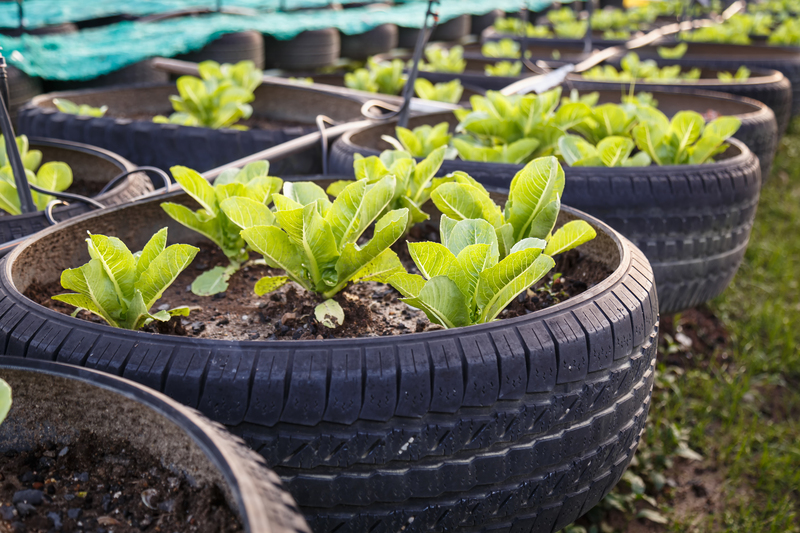Making PPE Waste Disposal Simple and Sustainable
The global pandemic has highlighted the vital role of Personal Protective Equipment (PPE), but with its widespread use comes an immense challenge: proper and sustainable disposal. In this comprehensive guide, we'll explore practical approaches that make PPE waste disposal both simple and environmentally responsible, benefiting not only businesses but also communities and our planet.
Understanding PPE Waste: What Is It?
PPE includes items like face masks, gloves, face shields, gowns, and shoe covers designed to protect individuals from infection or hazardous materials. Since early 2020, the demand for these crucial items skyrocketed, leading to a sharp surge in PPE-related waste. Most PPE is single-use and made from non-biodegradable plastics, amplifying concerns about environmental harm.
- Face masks (surgical, disposable, reusable)
- Protective gloves (nitrile, latex, vinyl)
- Disposable gowns and aprons
- Face shields and goggles
- Shoe covers and caps
The improper disposal of these materials leads to pollution of landfills, waterways, and even oceans, endangering wildlife and public health. Thus, making PPE waste disposal simple and sustainable has become a global priority.
The Global Impact: Why PPE Waste Needs Sustainable Solutions
According to the United Nations, approximately 75% of used masks, gloves, and other pandemic-related waste end up in landfills or as litter. This not only increases pollution but also introduces new threats to sanitation workers and wildlife.
- Landfill Overload: PPE waste comprises a significant portion of new medical and municipal waste.
- Plastic Pollution: Most PPE items are made from polypropylene and similar plastics, taking centuries to degrade.
- Wildlife Risks: Masks and gloves are often ingested by animals or entangle marine creatures.
- Health Hazards: Mishandled PPE waste can spread pathogens, endangering waste handlers and the broader community.
Challenges in PPE Waste Management
Traditional waste management systems are not always equipped to handle the massive influx of contaminated plastics from PPE, making sustainable PPE waste disposal more critical than ever.

Simple Steps for Effective PPE Waste Disposal
Streamlining PPE waste disposal starts with practical strategies at every stage--from use to collection to processing. Here are ways to make your PPE waste management both effective and straightforward:
1. Use Clearly Marked PPE Disposal Bins
- Dedicated Containers: Place labeled bins for PPE waste in accessible, high-traffic locations.
- Color Coding: Use color-coded bags (e.g., red or yellow) to distinguish PPE waste from other trash.
- No-Touch Options: Foot-pedal or sensor-activated lids help reduce cross-contamination risks.
Clear disposal points simplify the segregation of PPE waste, reducing contamination and making collection more efficient.
2. Educate and Train Staff and Users
- Awareness Programs: Conduct workshops and display posters explaining correct PPE waste disposal procedures.
- Instructional Signage: Post simple, graphic instructions near disposal points for clarity.
- Regular Updates: Refresh training to reflect the latest guidelines on PPE waste management.
Proper education ensures everyone understands their role in keeping environments safe and sustainable.
3. Centralize PPE Waste Collection
- Scheduled Pickups: Arrange regular collection times to prevent overflow and reduce risk of contamination.
- Tracking & Monitoring: Keep records of the amount and frequency of PPE waste generation and disposal.
Centralized collection simplifies logistics and helps organizations meet regulatory requirements for medical waste.
4. Use Sustainable PPE Alternatives
- Biodegradable Masks & Gloves: Opt for PPE made from compostable or easily degradable materials.
- Reusable PPE: In non-medical settings, use washable masks, face shields, and gowns where possible.
Integrating sustainable PPE into regular operations reduces future waste and overall environmental impact.
5. Partner with Certified PPE Waste Disposal Services
- Licensed Waste Haulers: Work with companies specializing in hazardous and medical waste.
- Transparent Processes: Choose providers who offer traceable, documented disposal and recycling practices.
Ensuring professional handling reduces illegal dumping and improper disposal.
Innovative Approaches for Sustainable PPE Waste Disposal
Making PPE waste disposal sustainable calls for adopting new technologies and methods that minimize long-term environmental harm.
1. Advanced Recycling Techniques
- Pyrolysis: Converts plastic-based PPE into fuel or raw materials for manufacturing, reducing landfill loads.
- Specialized Shredding & Sorting: Separates clean and contaminated PPE for appropriate processing.
- Chemical Recycling: Breaks down polymers in plastics to reuse them as feedstock for new products.
Several countries are piloting PPE recycling programs, demonstrating that with proper separation and technology, even contaminated plastics can be repurposed.
2. Compostable PPE Products
- Cornstarch-Based Masks: Designed to break down within months in industrial composting facilities.
- Cellulose-Based Gloves: Offer similar protection as synthetics, but decompose naturally after disposal.
The shift toward compostable PPE is gaining ground, especially in sectors where contamination risks are lower.
3. Waste-to-Energy Solutions
- Incineration with Energy Recovery: Modern incinerators convert PPE waste into electricity or heat, reducing environmental impact.
- Biomass Conversion: Some biodegradable PPE can be co-processed with organic waste to produce bioenergy.
These solutions not only minimize landfill use but also provide clean energy.
4. Community-Led PPE Collection Drives
- Schools, Offices, and Retailers: Set up collection points and work with local waste authorities for responsible disposal.
- Environmental NGOs: Lead campaigns to clean public spaces and educate on reducing PPE litter.
Grassroots initiatives magnify the impact of sustainable PPE waste management across regions.
Regulations for PPE Waste Management
Governments and authorities around the world have set strict rules for the management, segregation, and disposal of PPE waste. Understanding these guidelines is crucial for organizations and individuals seeking compliant, sustainable PPE waste disposal.
- OSHA (USA): Requires proper PPE waste containment and employee training.
- WHO & CDC: Issue best practice recommendations for healthcare and community settings.
- European Union: Enforces directives on collection, transport, and environmentally sound treatment of hazardous medical waste.
- Local Municipalities: Many cities and countries have introduced mask recycling programs and heavier penalties for littering PPE.
For businesses and institutions, documenting PPE waste disposal practices is recommended for compliance, safety, and sustainability reporting.
Overcoming Barriers: Towards Simpler, Greener PPE Waste Solutions
Despite advancing technologies and growing awareness, certain hurdles persist in achieving truly simple and sustainable PPE waste disposal:
- Lack of Infrastructure: Many areas still lack efficient collection, recycling, and disposal systems for PPE.
- Contamination Risks: Separating clean from contaminated PPE is complex, but essential for recycling.
- Costs: Sustainable alternatives and specialist disposal processes can be more expensive than landfill dumping.
- Apathy and Lack of Awareness: Many individuals are unaware of the harm caused by improper PPE waste disposal.
However, solutions exist:
- Invest in Education: Ongoing education nurtures responsible behaviour in workplaces and communities.
- Subsidize Sustainable Alternatives: Governments and industries can help make green solutions affordable.
- Public-Private Partnerships: Combine resources to improve PPE recycling and safe disposal infrastructure.
- Innovation in Product Design: Create PPE that is both effective and easier to recycle or compost.

Future Trends in PPE Waste Disposal and Sustainability
The future of PPE waste management will be shaped by rapid innovation, growing regulations, and increasing public environmental consciousness:
- Smart Bins: Automated bins with sensors to detect when they're full or to sort different types of PPE for recycling.
- Blockchain Traceability: Transparent tracking of PPE materials from use to final disposal, reducing illegal dumping.
- New Packaging Designs: Less material waste and easier separation of reusable and disposable components.
- Global PPE Recycling Hubs: Centralized, specialized facilities equipped to manage large-scale PPE recycling safely.
Organizations that invest in simple and sustainable PPE waste management will lead the way in corporate social responsibility and environmental protection.
Conclusion: Building a Greener World Through Smarter PPE Waste Disposal
Making PPE waste disposal simple and sustainable requires collaboration between manufacturers, businesses, consumers, and governments. By adopting clear disposal methods, choosing eco-friendly alternatives, investing in education, and supporting innovative solutions, we can:
- Reduce environmental impact of PPE waste
- Protect sanitation workers and communities from potential hazards
- Preserve wildlife and natural resources threatened by plastic pollution
- Comply with evolving regulations for medical and hazardous waste
Every step towards sustainable PPE waste management makes a difference. By raising awareness, integrating green choices, and supporting systemic change, we can collectively transform a pressing problem into an opportunity for environmental stewardship and a safer, cleaner future for all.
Take Action Today
Want to learn more about implementing simple and sustainable PPE waste disposal solutions for your organization or community? Explore local recycling programs, invest in compostable PPE, educate your teams, and connect with certified waste management providers to do your part in protecting the planet.
Together, we can make PPE waste disposal smarter, simpler, and truly sustainable.
